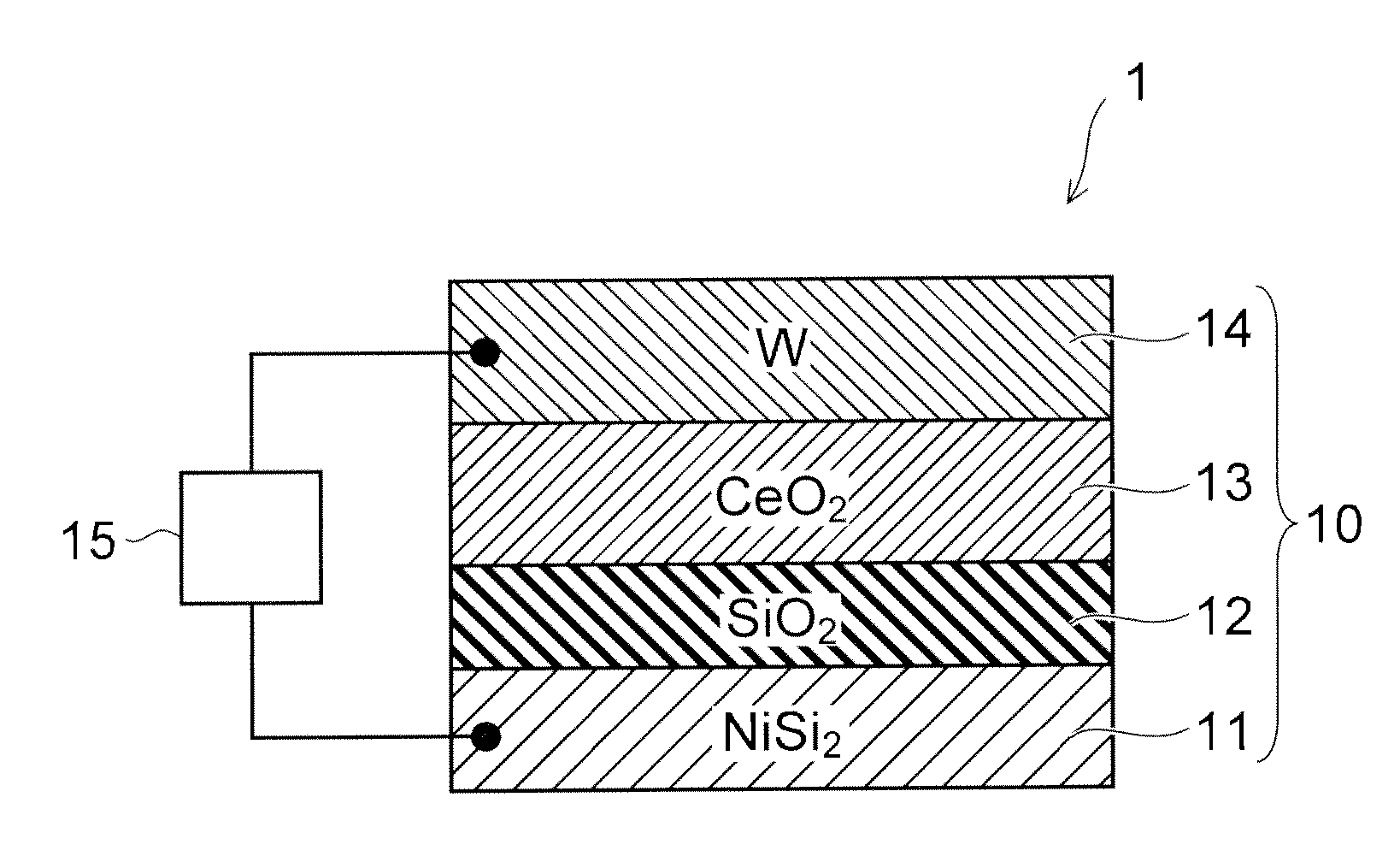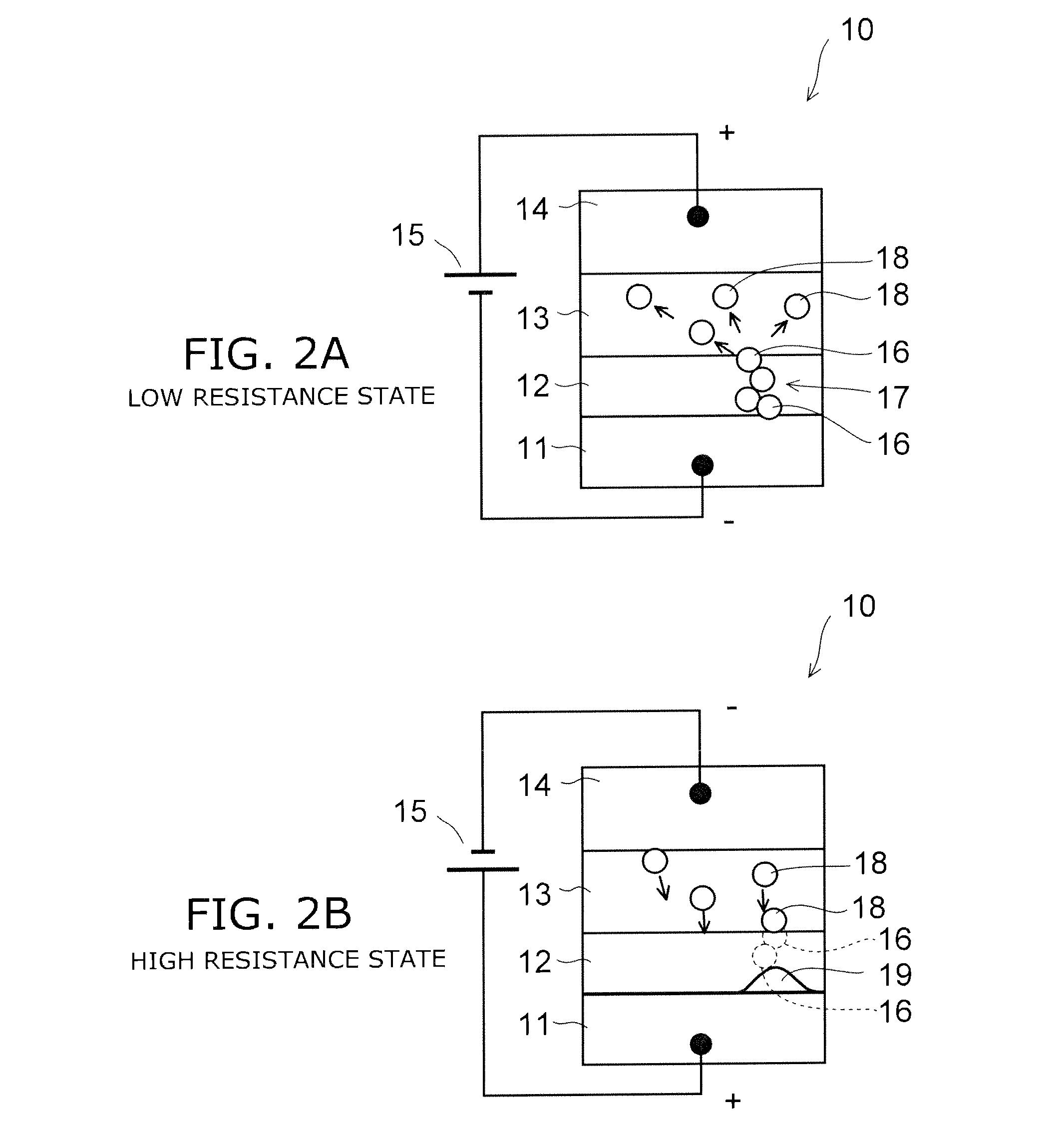Resistance change memory device
- Summary
- Abstract
- Description
- Claims
- Application Information
AI Technical Summary
Benefits of technology
Problems solved by technology
Method used
Image
Examples
third embodiment
[0126]FIG. 12A is a cross-sectional view showing the sample of a third example, and FIG. 12B is a graph showing the I-V characteristics of the sample, with the voltage on the horizontal axis and the current on the vertical axis.
[0127]As shown in FIG. 12A, the third example differs from the first example described above in that the oxygen conductive layer 13 is formed of a hafnium oxide (HfO2). The thickness of the hafnium oxide layer was set to 2 nm. Otherwise, the configuration of the third example is similar to the first example. That is, in the third example, the lower electrode 11 was formed of nickel disilicide (NiSi2) and the upper electrode 14 was formed of tungsten (W). A silicon oxide layer (SiO2) was formed between the nickel disilicide layer (the lower electrode 11) and the hafnium oxide layer (the oxygen conductive layer 13).
[0128]As shown in FIG. 12B, also in the third example, similar I-V characteristics to the first example were found. The ON / OFF ratio of the third ex...
fourth example
[0129]FIG. 13A is a cross-sectional view showing the sample of a fourth example, and FIG. 13B is a graph showing the I-V characteristics of the sample, with the voltage on the horizontal axis and the current on the vertical axis.
[0130]As shown in FIG. 13A, the fourth example differs from the first example described above in that the lower electrode 11 is formed of silicon with the conductivity type of the p+-type and the oxygen conductive layer 13 is formed of a hafnium oxide (HfO2). The thickness of the hafnium oxide layer was set to 2 nm. Otherwise, the configuration is similar to the first example. A silicon oxide layer (SiO2) was formed between the p+-type silicon layer (the lower electrode 11) and the hafnium oxide layer (the oxygen conductive layer 13).
[0131]As shown in FIG. 13B, also in the fourth example, similar I-V characteristics to the first example were found. The ON / OFF ratio of the fourth example was 2×105 when the read potential was set to −0.1 V. Thus, a high ON / OFF...
PUM
 Login to View More
Login to View More Abstract
Description
Claims
Application Information
 Login to View More
Login to View More - R&D
- Intellectual Property
- Life Sciences
- Materials
- Tech Scout
- Unparalleled Data Quality
- Higher Quality Content
- 60% Fewer Hallucinations
Browse by: Latest US Patents, China's latest patents, Technical Efficacy Thesaurus, Application Domain, Technology Topic, Popular Technical Reports.
© 2025 PatSnap. All rights reserved.Legal|Privacy policy|Modern Slavery Act Transparency Statement|Sitemap|About US| Contact US: help@patsnap.com



